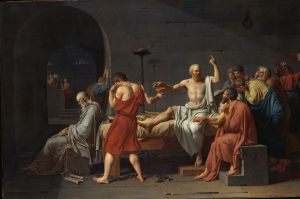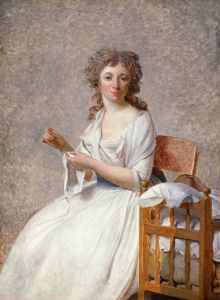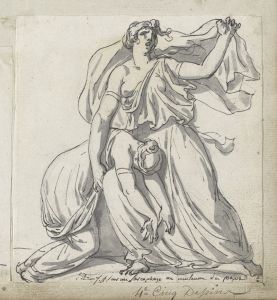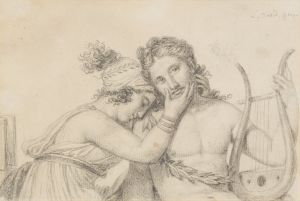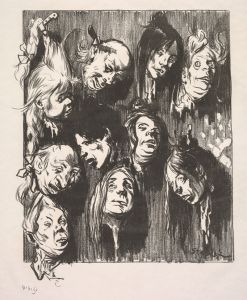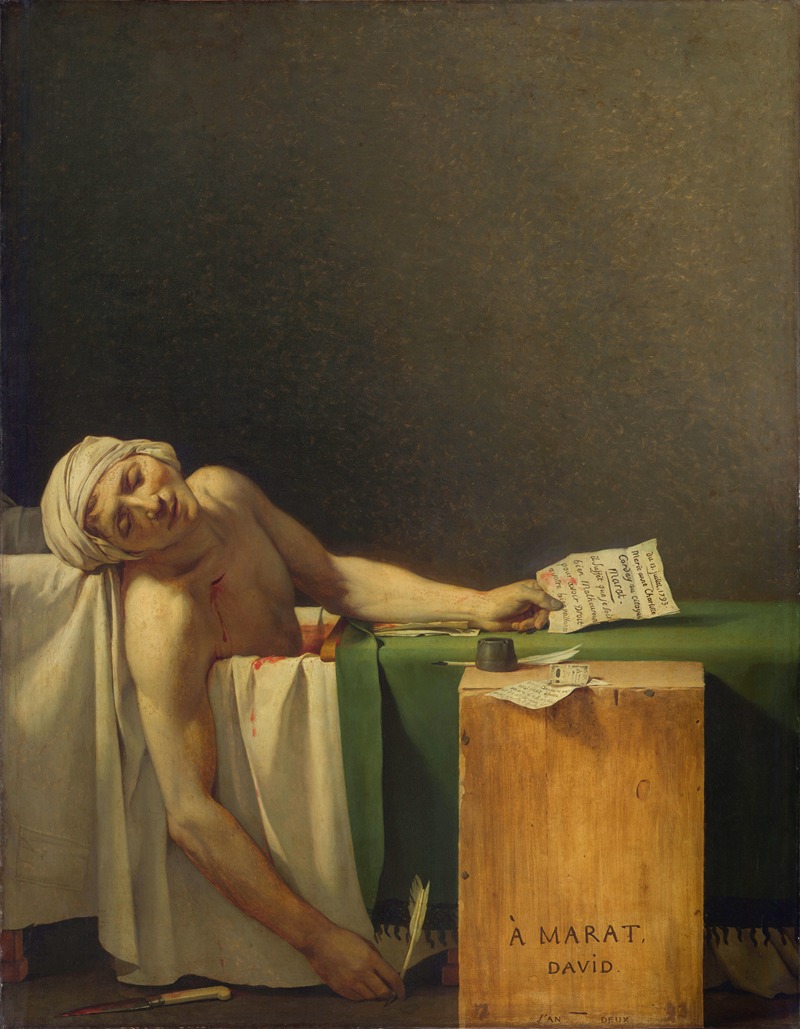
Marat Assassinated
A hand-painted replica of Jacques Louis David’s masterpiece Marat Assassinated, meticulously crafted by professional artists to capture the true essence of the original. Each piece is created with museum-quality canvas and rare mineral pigments, carefully painted by experienced artists with delicate brushstrokes and rich, layered colors to perfectly recreate the texture of the original artwork. Unlike machine-printed reproductions, this hand-painted version brings the painting to life, infused with the artist’s emotions and skill in every stroke. Whether for personal collection or home decoration, it instantly elevates the artistic atmosphere of any space.
"Marat Assassinated," also known as "The Death of Marat," is a renowned painting by the French artist Jacques-Louis David, completed in 1793. This neoclassical masterpiece captures the assassination of Jean-Paul Marat, a radical journalist and politician during the French Revolution. The painting is celebrated for its emotional intensity, meticulous detail, and historical significance.
Jean-Paul Marat was a prominent figure in the French Revolution, known for his fiery writings and staunch support of the radical Jacobin faction. He was a member of the National Convention and a vocal advocate for the rights of the lower classes. Marat suffered from a debilitating skin condition, which required him to spend long hours in a medicinal bath to alleviate his symptoms. It was in this vulnerable state that he was murdered by Charlotte Corday, a Girondin sympathizer who blamed Marat for the escalating violence and turmoil of the Revolution.
On July 13, 1793, Corday gained access to Marat's residence under the pretense of delivering a list of traitors. Once inside, she stabbed Marat in the chest with a kitchen knife, killing him almost instantly. David, who was a close friend and political ally of Marat, was deeply affected by his death and sought to immortalize him through his art.
"The Death of Marat" depicts the aftermath of the assassination with striking realism and poignancy. Marat is shown reclining in his bath, his lifeless body draped in a simple white cloth. His right hand still clutches a quill, while his left hand holds Corday's letter. The blood from his wound stains the bathwater and the cloth, creating a stark contrast against the otherwise serene composition. David's use of light and shadow enhances the dramatic effect, drawing the viewer's attention to Marat's serene expression and the tragic circumstances of his death.
The painting is notable for its classical composition and the use of chiaroscuro, a technique that emphasizes the contrast between light and dark. David's meticulous attention to detail is evident in the textures of the fabric, the wooden writing desk, and the smoothness of Marat's skin. The simplicity of the background, with its muted tones and lack of extraneous detail, serves to focus the viewer's attention on the central figure and the emotional gravity of the scene.
"The Death of Marat" has been interpreted as both a political statement and a tribute to a fallen hero. David intended the painting to serve as a powerful piece of revolutionary propaganda, portraying Marat as a martyr who sacrificed his life for the cause of liberty and justice. The work was displayed publicly and became an iconic image of the Revolution, reinforcing Marat's legacy and the ideals he championed.
Today, "The Death of Marat" is housed in the Royal Museums of Fine Arts of Belgium in Brussels. It remains one of Jacques-Louis David's most famous works and a poignant reminder of the turbulent and transformative period of the French Revolution. The painting continues to be studied and admired for its artistic mastery and historical significance.





